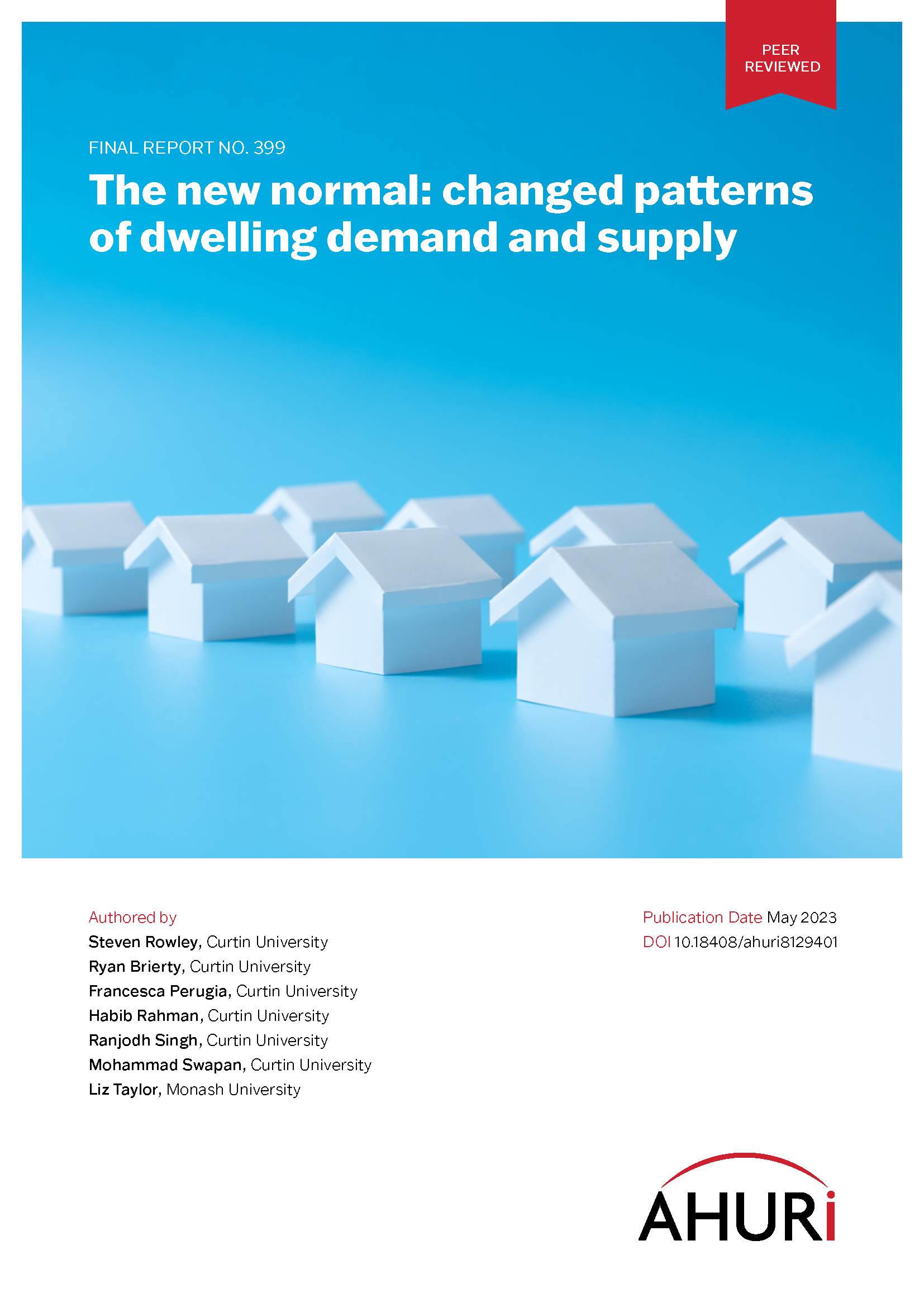
COVID-19 fallout continues to affect housing markets
“Australia will be dealing with the impact of COVID-19 on its housing markets for some time as increased construction costs and a reduced appetite for risk impede new housing supply,” says Professor Steven Rowley, lead author of new AHURI research released today. The lack of new housing supply predicted in the next two years will have implications for both the home ownership and rental markets. On the positive side, a lack of new private sector development will create capacity in the industry and provide government with an opportunity to accelerate its social housing building program.
26 May 2023
The research, ‘The new normal: changed patterns of dwelling demand and supply’, undertaken for AHURI by researchers from Curtin University and Monash University examines the impact of the COVID-19 pandemic on patterns of housing supply and demand and how the Australian housing market has changed over the last decade.
The report found COVID changed what households want from their home: more space, both inside and out, which was linked with the ability to work more from home and a heightened demand for lifestyle locations. The pandemic led to significant and distinct changes in where people wanted to live, with low or negative growth in inner urban areas; growth in regional towns and cities (particularly those associated with sea and tree changes); and strong growth in traditional first home buyer areas, primarily on the urban periphery.
“The pandemic showed us just how quickly demand for housing can change, with a shift to home buyers wanting to escape metropolitan areas; to larger homes and more private space; and to work from home in lifestyle locations,” says Professor Rowley.
However, Professor Rowley believes we are now shifting back towards pre-pandemic patterns of demand. “While COVID drove some permanent changes, such as working from home opportunities for many, and a surge in regional house prices, the market appears to be returning to pre-pandemic patterns with location and affordability the key drivers. Interest rate rises have played a key part in this with the cost of buying having risen sharply. Tight rental markets across the country have limited household movements”.
The increase in building costs, combined with construction delays, led to an increased demand for established dwellings. However this situation creates a vicious cycle of housing scarcity. “Owners of existing properties are reluctant to sell as there are a lack of options to buy. A very tight rental market means renting in between selling and buying a dwelling is difficult,” said Professor Rowley.
Professor Rowley highlighted concerns around new housing supply. “Increased construction costs resulting from labour and material shortages have played havoc with the multi-residential sector. Many private sector developments are no longer profitable and builders are not wanting to take on the risk of residential development. This will have serious implications for housing markets over the next couple of years, contributing to a housing supply shortage. The lack of new supply and strong population growth means upward pressure on both prices and rents - not good news for potential purchasers or anyone in the rental market”.
The report finds that governments must continue to work on policies that make it easier to deliver housing within existing urban areas, and this housing must deliver diversity, not simply be dominated by apartments. “It will take a partnership between government and the private sector to deliver more diverse housing options in many regional areas where the private sector struggles to operate,” said Professor Rowley. “It’s critical that government supports community and not-for-profit housing in regional areas where housing demand is acute, but where traditional finance and development models are less feasible” he said.
“Governments should take a more direct role in housing supply, including through large scale delivery of social and affordable housing, both in cities and in regional areas. Protecting supply chains and training a workforce to respond to supply pressures is also essential.”

